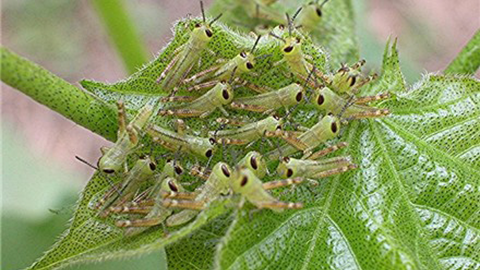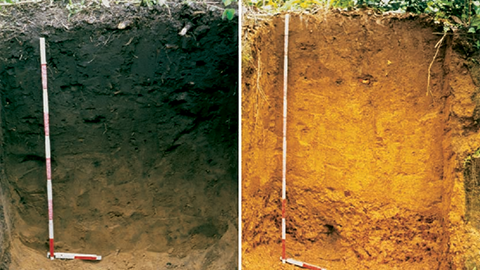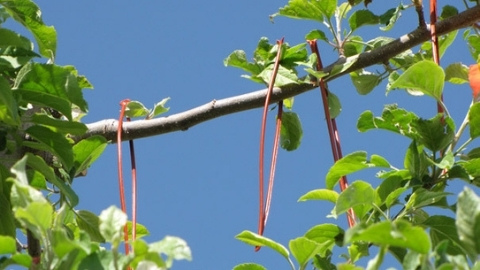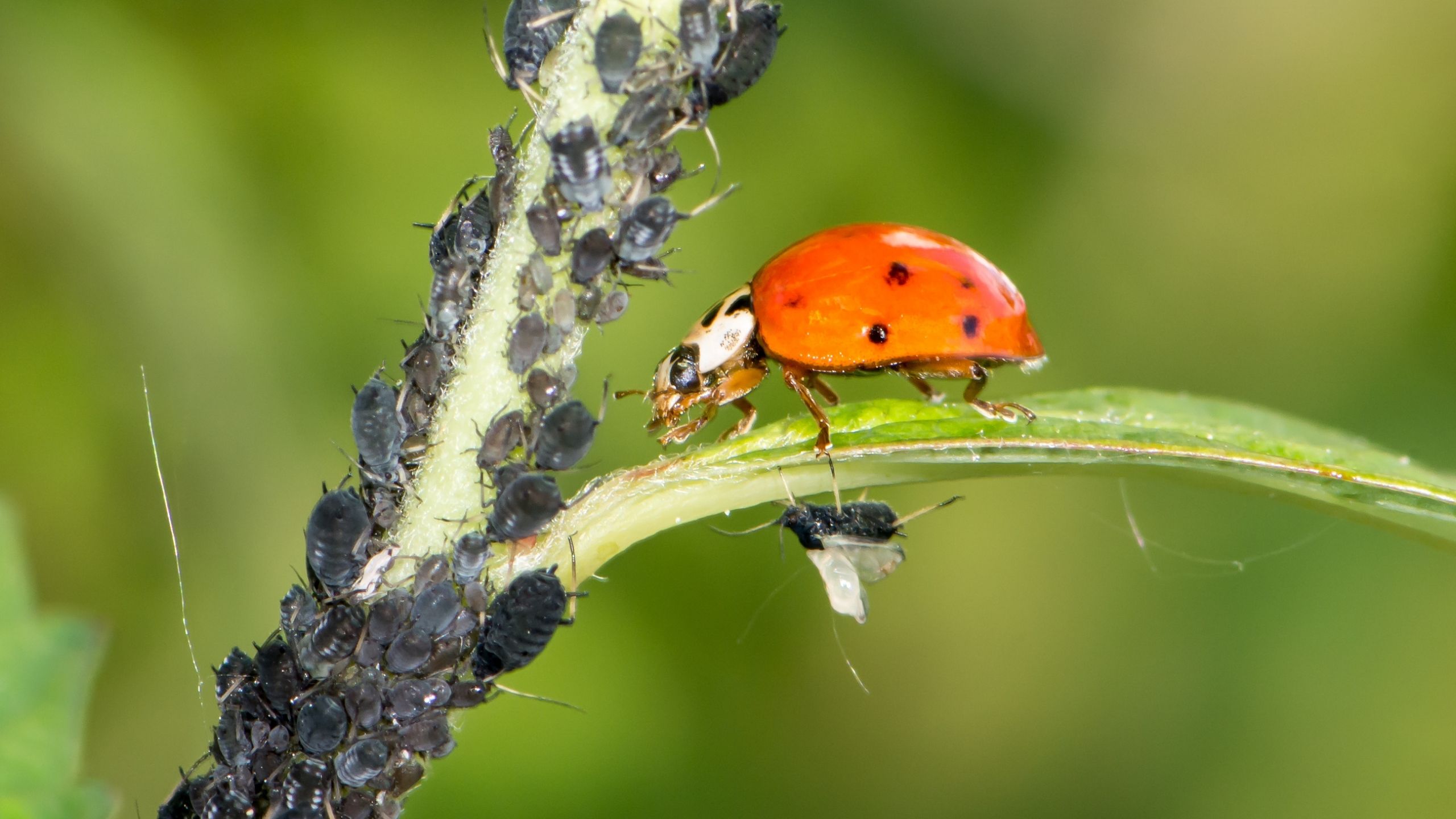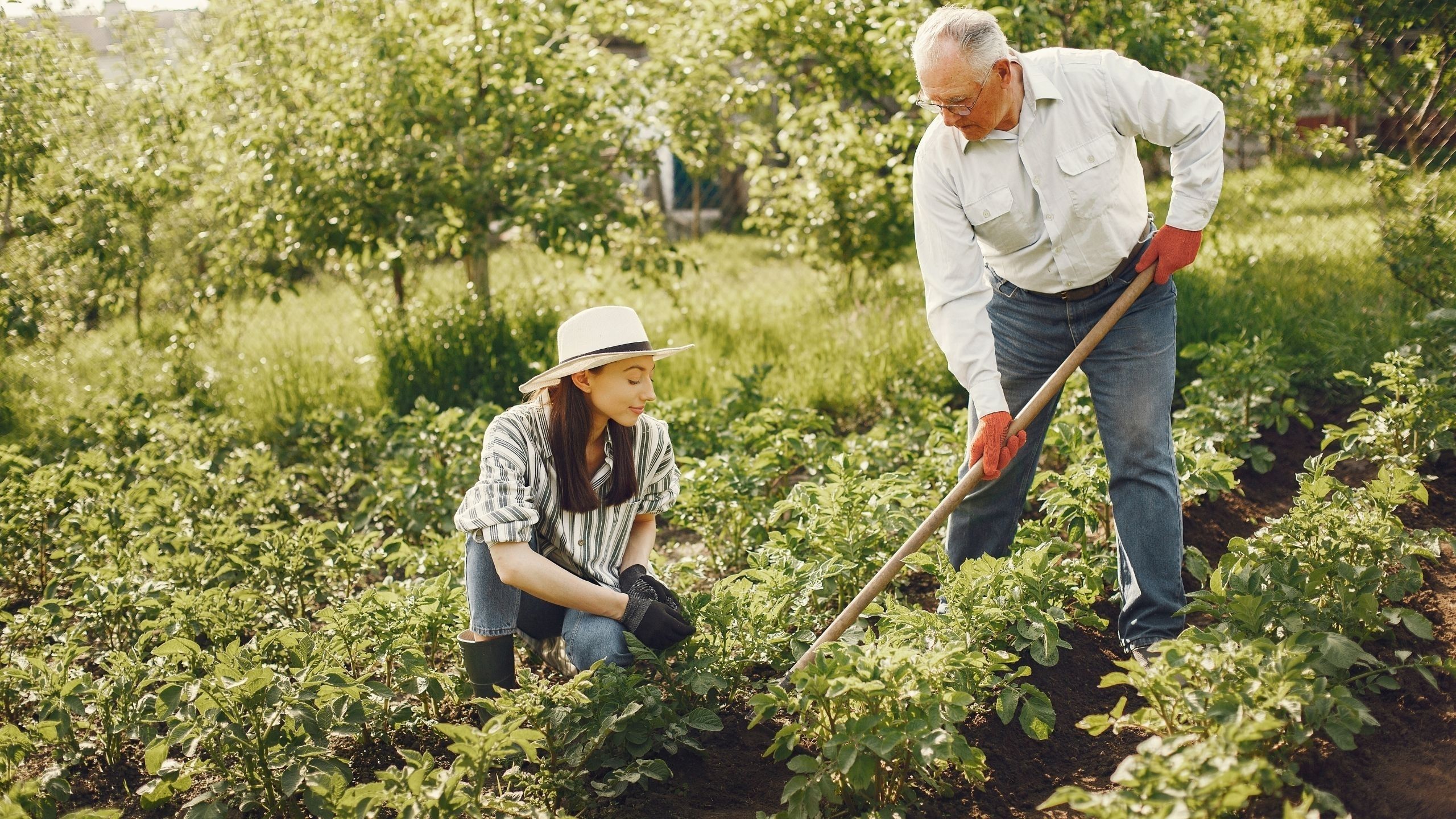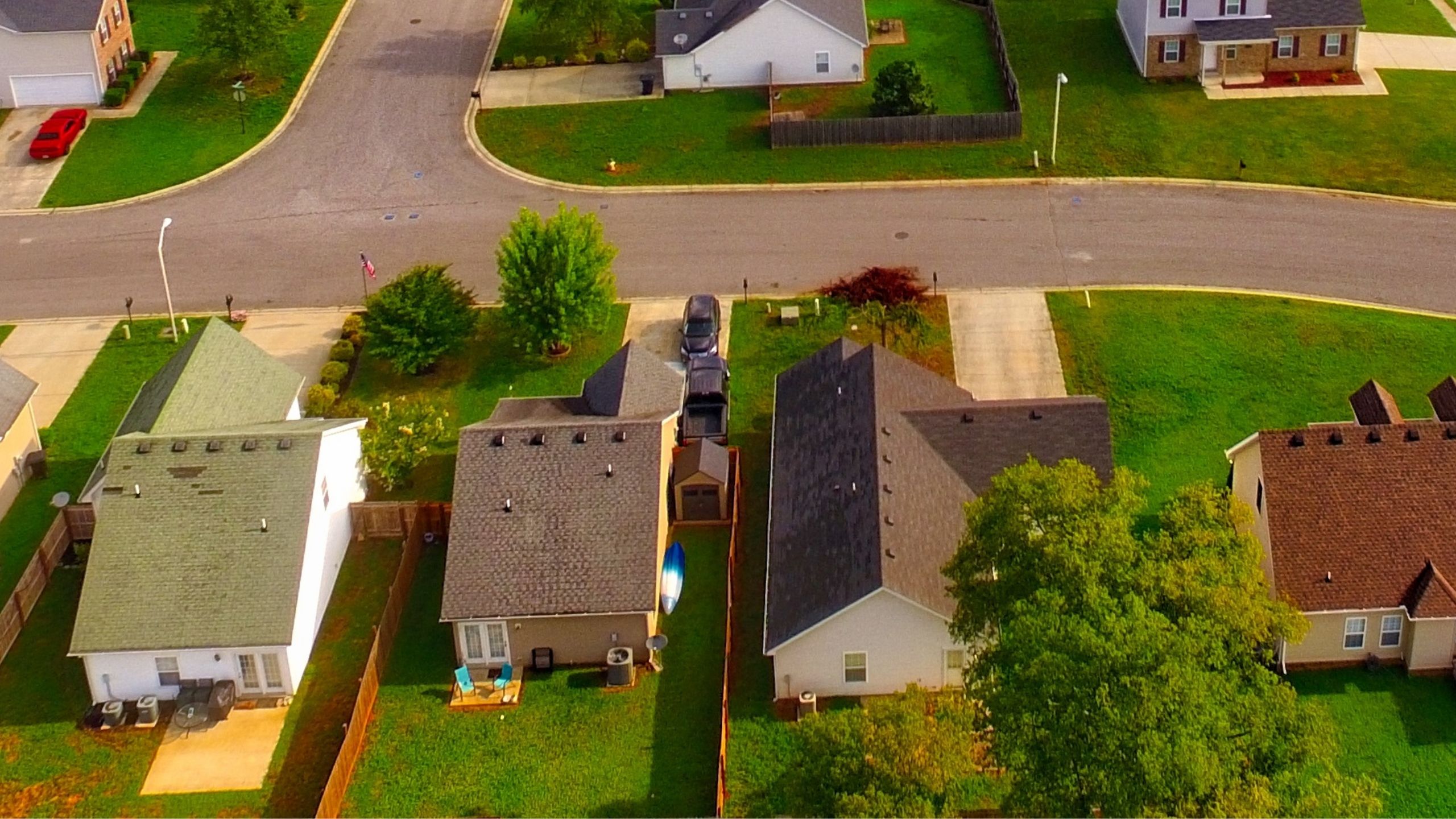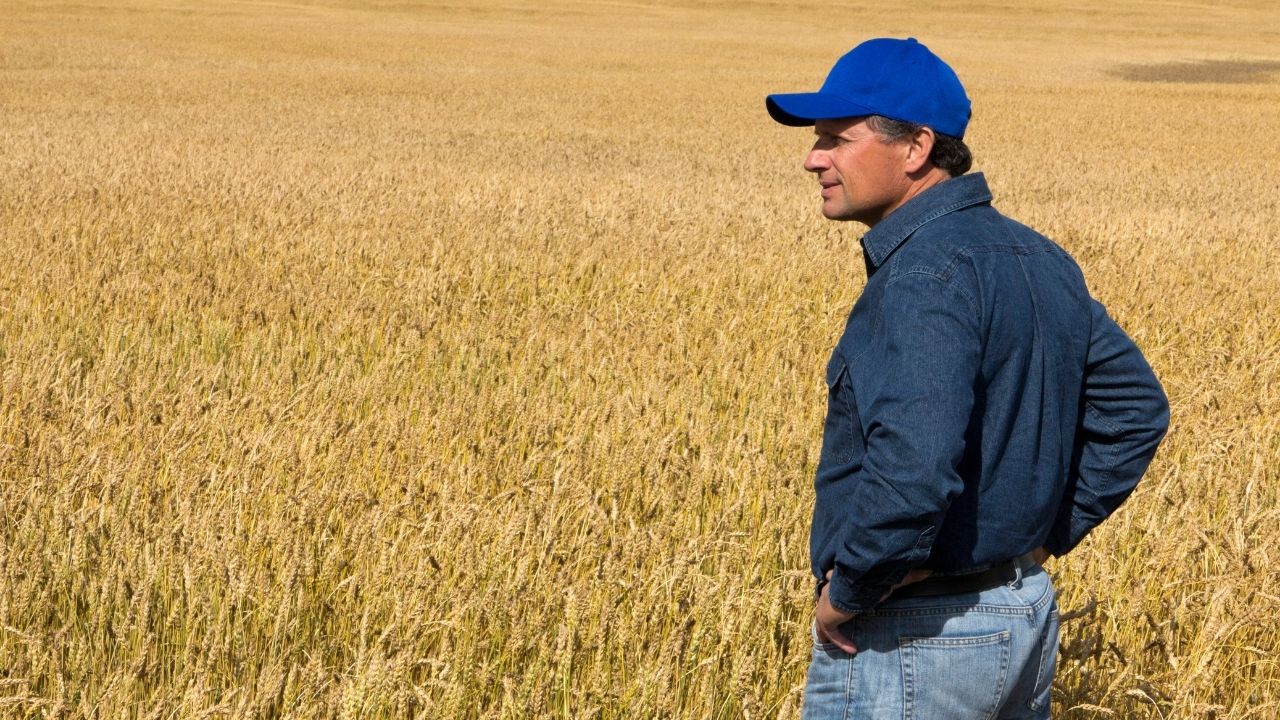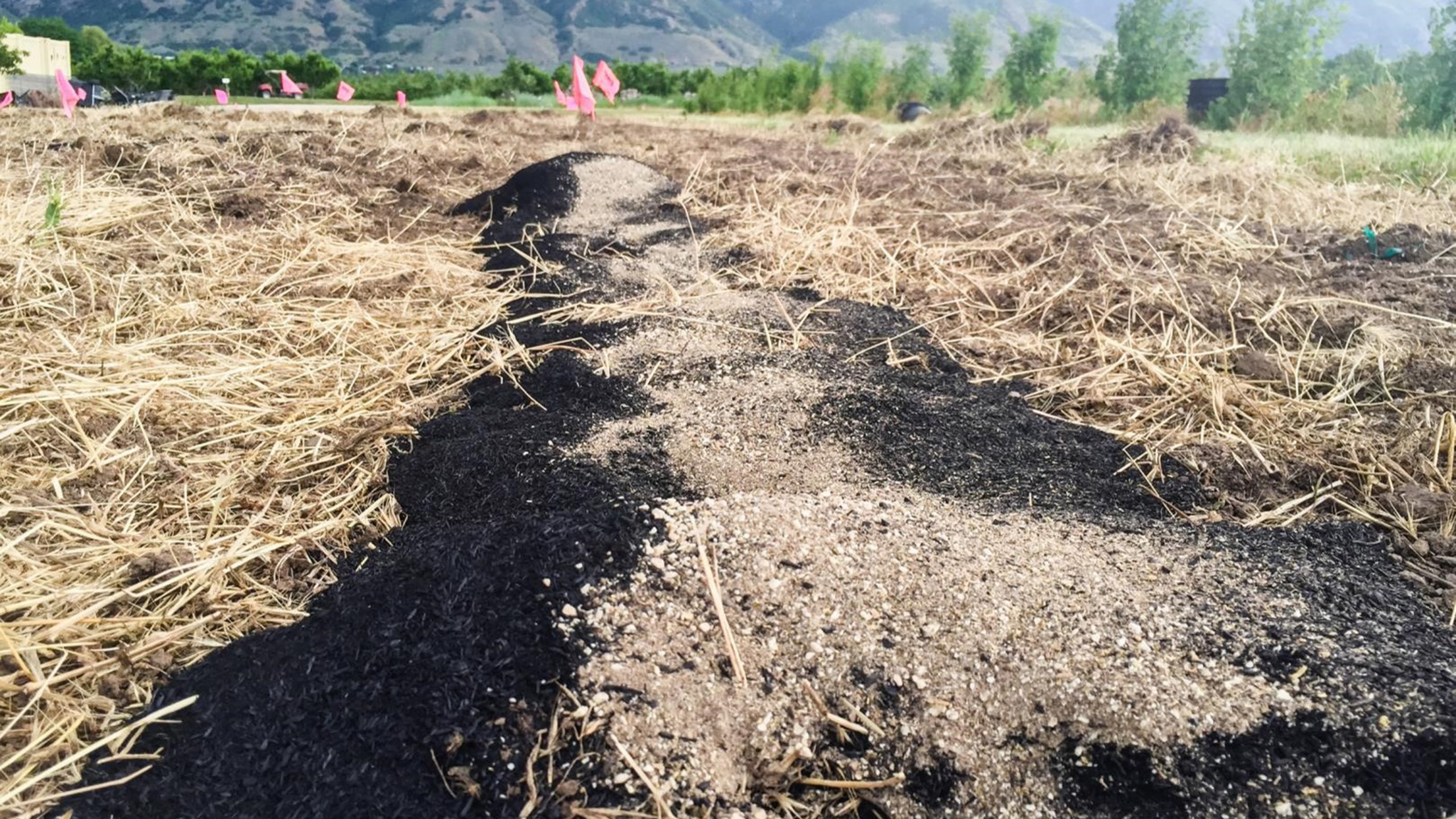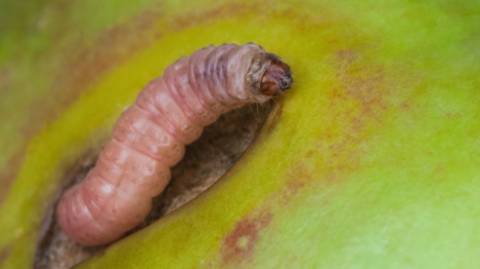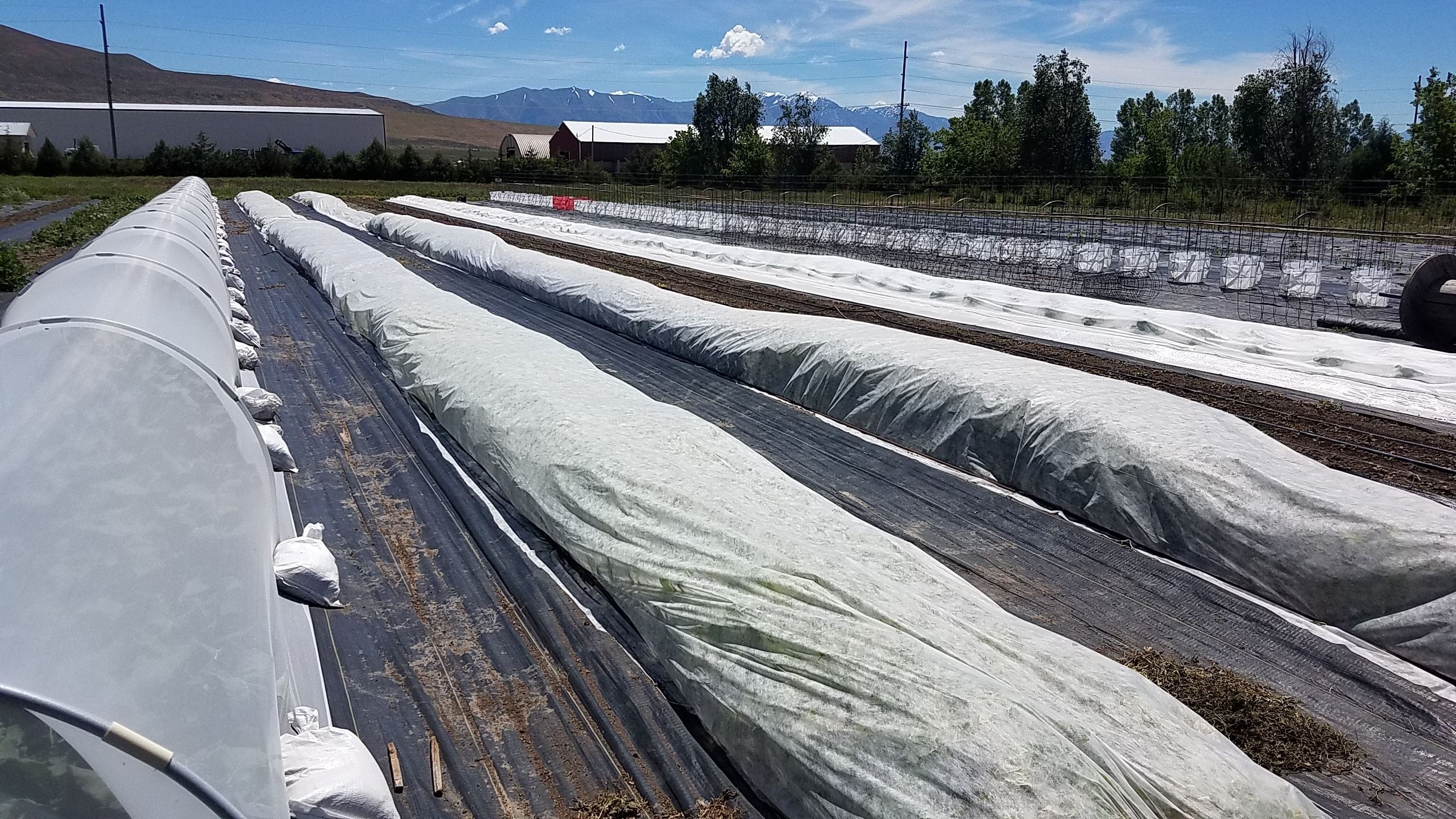Important Components of a Successful Pest Management Program
July 2011
Diane Alston, Extension Entomologist (No longer at USU)
Important First Steps
Economic-injury Level (EIL) (Stern et al., 1959) – “The lowest population density of a pest that will cause economic damage; or the amount of pest injury which will justify the cost of control.”
1. Pest Identification
Before deciding to take any pest control action, be sure you have correctly identified the pest (insect, mite, disease, weed, vertebrate, etc.). Proper pest identification is essential for determining if control is necessary and for selection of the best suited control options.
2. Surveying for Pests and Injury Caused by Pests
It is very important to look for pests and injury symptoms on a regular basis. It is best to use a consistent sample or survey method. Traps for monitoring insects, diseases, or vertebrates can be used when available and appropriate for the situation. Sampling frequency will depend on the pest and situation, but a general guideline for many insects and diseases is to sample every 1–2 weeks during the main growing season. Look in the places where the pests commonly occur — undersides of leaves, under bark, inside fruits, in soil, etc.
3. Control Action Guidelines
Action Threshold: “The point at which a pest control action must be taken to prevent unacceptable damage.”
The pest manager should develop a set of guidelines for each situation which guides his/her decision-making on acceptable levels of pest injury. A low level of pest injury can perhaps be ignored if the loss will not justify the cost of control. The economic and aesthetic vales,of the management situation need to be considered, and will most likely be the primary factors driving pest control decisions. Other considerations may be the environmental and social costs of pest control decisions.
Identifying Windows of Opportunity
All types of pests have a life cycle or set of developmental events that occur during their life time.
The type of life cycle will vary with the pest. However, most pests have certain weak points or “windows of opportunity” during their life cycle when they are the most vulnerable to control. For insects, these windows are often during the immature life stages (Fig. 1a). Weeds are typically easiest to control during their seedling stage, early in the season when they are just beginning to grow (annuals) or late in the season when they are preparing for dormancy (perennials) (Fig 1b). Diseases are often easiest to control by using preventive or early intervention tactics before the disease begins developing or becomes established. To optimize management of a pest, control tactics should be targeted for these weak points.
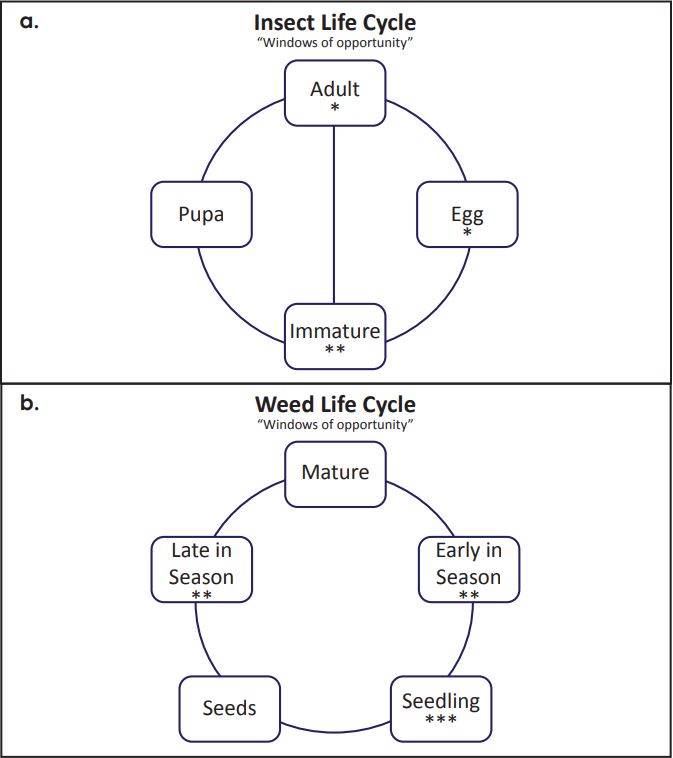
General Pest Management Tactics
The easiest, lowest cost, and often most reliable way to avoid many pest problems is to provide a healthy environment that discourages pest activities and/ or reduces the host’s (plant, animal, or ecosystem) susceptibility to damage. In general, such methods promote long-term and stable pest suppression. For pests that directly attack essential or yield producing structures of the host (e.g., for plants: fruits, seeds, flowers, stems, trunks), short-term tactics such as pesticides are often the quickest and most reliable pest control option. A combination of both short- and long-term tactics is often the best approach.
Examples of some general pest management tactics:
Short-term vs. Long-term Tactics
| Short-term | Long-term |
| Chemicals | Cultural |
| Mechanical | Biological |
| Biological |
1. Cultural Controls
Land/Water Management: Maintain the ecosystem in a healthy state to minimize the competitiveness of pests. In some situations water levels can be regulated to reduce pest problems (e.g., mosquitoes, aquatic weeds, etc.). Avoid over- or under-watering plants to minimize stress.
Sanitation: Remove (prune, gather, burn) plant parts and debris that can serve as protective or overwintering sites for many pests.
Habitat Diversification: In monoculture situations (e.g., agricultural fields, orchards, landscapes, etc.), diversification of vegetation in the habitat may subsequently increase the diversity of animal life in the habitat. Because such diversification may attract beneficial and pest organisms, the specific approach should be tailored to the specific situation.
Tolerant / Resident Species and Cultivars: Select insect and disease resistant species and cultivars of plants whenever they are available. For perennial plants, select species and cultivars that are cold hardy (for cold climates). A winter damaged plant or tree will be more susceptible to attack by pests.
Soils and Nutrition: Although you cannot change the soil type in an area, there are some practices you can follow to improve growing conditions for plants. Proper fertilization is important, but over-fertilization can lead to excessive, lush growth that can be attractive to aphids and other foliage pests. Increasing organic matter of soil where it is low can improve the growth and health of plants.
1. Mechanical Controls
Hand Removal: Hand-pulling of weeds or other pests physically removes them from the situation.
Mowing: Mowing down weeds, especially before they produce seeds, can be a very effective management tool.
Traps: Attractive traps can be used to mass trap and remove pests from the environment or to monitor their activity so that control actions can be appropriately timed. Traps are primarily used for insect and vertebrate pests, and for some disease pests. Attractive traps typically use visual cues (color) and/or odors (pheromones, food baits) to attract pests to them. Passive traps may be placed in areas of common pest activity or use wind currents to catch pests.
Physical Barriers: There are many types of physical barriers that can be used to block or disrupt the movement of pests. For example, sticky bands placed around the trunks of trees can prevent some mite and insect pests from crawling up into trees.
3. Biological Controls
Biological Controls: “Any activity of one species that reduces the adverse effect of another.”
Predators: an organism that eats or consumes another (e.g., predatory insects and mites).
Parasites: an organisms that lives in or on another and kills it (parasitoid) while completing its life cycle (e.g., parasitic insects).
Pathogens: microbial agents that attack and invade other organisms (e.g., bacteria, viruses, nematodes).
Herbivorous insects of weeds: plant-feeding insects that attack weeds.
Biological control agents can be purchased from commercial suppliers and released for supplementary control of pests. Biological control releases can be inundative (flood an area with the agents to reduce the pest in the short-term) or inoculative (release agent over a period of time to help it colonize and spread). However, most biological control occurs without assistance from people. Many predators, parasites and pathogens occur naturally and are continually working to help keep nature in balance. The importance of “natural enemies” is often not appreciated until a broad spectrum pesticide, which kills many beneficials as well as the targeted pest, is applied and a new pest— suddenly released from biological control— become a serious problem. There are things you can do to encourage the activities of biological control agents already present in the environment:
- Avoid the use of broad spectrum pesticides unless necessary. Use selective pesticides and target them to pest-problem spots.
- Provide a habitat that is more favorable for natural enemies (see Habitat Diversification under Cultural Controls) by choosing adjacent plants that supply nectar, pollen, alternate hosts, and structural protection. Avoid complete removal of habitat for beneficials (field borders, adjacent crops, ground covers, etc.).
- Provide adequate organic matter in soil to ensure good habitat for soil microorganisms that control a variety of pests, particularly soil pathogens and rootfeeding nematodes.
3. Chemical Controls
Pesticide: “Any substance applied to control insects, fungi, bacteria, weeds, vertebrates or other pests.”
Since the advent of “synthetic” pesticides in the 1940s, pest managers have become very reliant on their generally simple-to-use, fast-acting, and effective attributes to manage the majority of pest problems. In recent times, resistance of pests to pesticides because of their high use has become a major problem. To reduce the reliance on pesticides as a single-pronged approach
to pest management, pest managers should become more familiar with all types of pest control tactics, so
that the best one(s) can be selected for each situation. Although pesticides have been perhaps overused in recent decades, they still remain an important tool in the pest management toolbox. Avoidance of overuse will allow them to remain viable pest control tools for many more decades to come.
Many types of chemicals used before the development of synthetic pesticides are becoming popular once again
as alternative or “organic” pest controls. In addition, many new chemical products are being developed and made available, such as “biologicals” and “insect growth regulators.”
Synthetic Pesticides: Human-made in the laboratory; chemically joined compounds or elements (e.g., most herbicides, diazinon, malathion, carbaryl, benomyl, streptomycin, etc.)
Organic Pesticides: Derived from plant, animal, or naturally occurring rock or petroleum oil sources (e.g., rotenone, sabadilla, ryania, nicotine sulfate, pyrethrum, soaps, oils, microbial agents, lime sulfur, copper, etc.)
Biological Pesticides: A subset of organics that specifically refer to products developed from naturally occurring microbial agents such as bacteria, viruses, and fungi (e.g., Bacillus thuringiensis, a bacterial pathogen of many insects.)
Insect Growth Regulators (IGRs): Kill insects by interfering with the normal processes of juvenile development; common IGRs disrupt either the insect’s hormonal process or exoskeleton development.
Related Research


